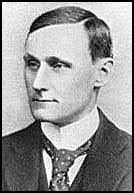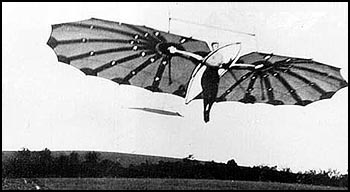Percy Pilcher

Percy Pilcher was born in Bath in 1867. He joined the Royal Navy in 1880 but resigned seven years later to become an apprentice with the shipbuilders, Randolph, Elder and Company, of Glasgow.
In 1891 Pilcher began work as assistant lecturer at Glasgow University. He took a growing interest in aviation and began building a glider called the Bat . This flew for the first time in 1895. Later that year Pilcher met Otto Lilienthal, who was the leading expert in gliding in Germany. These discussions led to Pilcher building two more gliders, the Beetle and the Gull .
Otto Lilienthal was killed on 10th August, 1896, while flying one of his gliders in Berlin. Pilcher now became the favourite to be the first person to build a powered flying machine.
Pilcher's fourth glider, the Hawk , was influenced by the ideas of Otto Lilienthal. This glider had lightweight wheeled landing gear and broad wings. In 1897 Pilcher broke the world record for flight when his glider covered 820 feet (250 m). Pilcher now developed a new triplane with a 4 h.p. engine that drove two propellers.


On 30th September, 1899, Percy Pilcher planned to make his first test flight of his new triplane at Stanford Park in Leicestershire. The weather was bad and Pilcher was forced to postpone his attempt to become the first man to make a powered flight. In order to appease the large crowd that had turned up to see the show, Pilcher decided to take up his glider, the Hawk. .
Pilcher reached a height of nearly 30 feet (9.1 m) when the wire in the tail snapped. Percy Pilcher crashed to the ground and died two days later. As there was no one to carry on Pilcher's work his new powered triplane was never flown.
© John Simkin, May 2013
